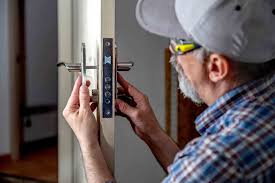How Procurement Supports Healthcare Facilities with Regulatory-Compliant Furnishings

Furnishings in healthcare facilities are far more than just chairs, beds, or tables. They directly affect patient safety, clinical efficiency, and compliance with legal standards. In this context, FF&E procurement—which stands for Furniture, Fixtures, and Equipment procurement—plays a critical role in ensuring that all furnishings meet stringent regulatory requirements. As regulations tighten across the healthcare landscape, procurement departments specializing in FF&E ensure every item purchased aligns with these complex standards. From infection control to ADA accessibility, regulatory-compliant furnishings are a non-negotiable element in healthcare environments—and procurement is the linchpin ensuring their proper selection and integration.
Understanding Healthcare Regulations for Furnishings
Healthcare furnishings are regulated to protect patients, staff, and visitors. Facilities must align with mandates from various bodies, including:
Centers for Medicare & Medicaid Services (CMS): Requires facilities to meet specific safety and quality benchmarks to maintain certification.
Joint Commission: Audits healthcare environments for compliance with safety, sanitation, and patient rights.
Americans with Disabilities Act (ADA): Ensures that furnishings are accessible to all patients, regardless of physical ability.
These agencies oversee multiple aspects of furnishing design and functionality, such as:
Fire safety compliance (e.g., UL certifications and fire-retardant materials)
Hygiene standards (e.g., antimicrobial surfaces, easy-to-clean materials)
Ergonomics and patient safety
Infection control and spill resistance
Durability under high usage
The Role of Procurement in Compliance Management
Procurement isn’t just about cost control. It serves as the frontline defense in ensuring all furniture acquisitions are compliant with applicable health and safety regulations. Procurement professionals:
Translate regulatory language into actionable purchasing standards
Create RFPs that specify compliance requirements
Vet suppliers based on adherence to certifications like ISO, CAL 133, or GREENGUARD
This makes the procurement department a strategic partner in both patient safety and risk management.
Procurement also ensures documentation is properly archived, supporting the healthcare facility during audits or inspections. In short, it's not just about “what to buy”—but how and why it’s selected.
Selecting Regulatory-Compliant Furniture
Choosing the right furnishings starts with identifying key attributes aligned with healthcare needs. Procurement teams evaluate products based on:
Antimicrobial properties: Surfaces that resist bacteria, fungi, and viruses
Non-porous finishes: For effective cleaning and disinfecting
Rounded edges and fall-prevention design: Reducing injuries to patients and staff
ADA compliance: Furniture height, width, and access features must cater to patients with disabilities
Fire resistance: Verified through UL or NFPA ratings
To ensure compliance, procurement professionals typically request:
Manufacturer certifications
Third-party testing results
Warranty and maintenance documentation
These practices create a paper trail of compliance that protects the facility during inspections.
Cost vs. Compliance: Strategic Procurement Decision-Making
While budget constraints are real, choosing furnishings based solely on cost can backfire. Non-compliant furniture may lead to failed inspections, higher infection rates, or lawsuits—all of which incur far more expense than compliant alternatives.
Smart procurement teams understand that:
Regulatory-compliant furniture lasts longer and performs better under hospital-grade usage
Long-term value often outweighs short-term savings
Warranty terms and maintenance requirements can lower future repair or replacement costs
Procurement strategy must balance cost-effectiveness with compliance, ensuring that budget decisions don’t compromise regulatory integrity.
Collaboration Between Procurement, Compliance Teams, and Clinical Staff
Procurement decisions in healthcare can't occur in silos. To ensure success, there must be active collaboration among departments. Compliance officers interpret regulations. Clinical staff provide insight into patient needs. Procurement professionals integrate both perspectives into sourcing.
For example, when sourcing hospital beds:
The clinical team may emphasize pressure-relief features
The compliance team ensures the beds meet FDA medical device standards
The procurement team evaluates vendors, negotiates pricing, and verifies certifications
This collaborative model reduces oversights and leads to smarter, safer procurement outcomes.
Lifecycle Management and Ongoing Compliance
Procurement's role doesn’t end once furniture is delivered. Ongoing compliance must be ensured through:
Scheduled maintenance checks
Replacement tracking for aging furniture
Vendor re-certification reviews
Healthcare regulations evolve. What’s compliant today may be outdated in two years. That’s why smart procurement systems include lifecycle data management, ensuring facilities can respond quickly to regulatory updates.
Some procurement platforms even offer automation that alerts teams when warranties expire or replacement is due based on usage cycles and safety metrics.
Benefits of Regulatory-Compliant Furnishings in Healthcare Environments
The impact of compliant furnishings goes far beyond avoiding penalties. Here are two major areas where the benefits are especially felt:
1. Patient Safety and Satisfaction
Reduces risk of hospital-acquired infections (HAIs)
Promotes accessibility and comfort for patients with limited mobility
Minimizes patient falls or injuries
2. Operational and Legal Advantages
Simplifies accreditation processes with The Joint Commission or CMS
Reduces legal liability during inspections or lawsuits
Protects facility reputation and stakeholder trust
In essence, furnishing compliance is not just about boxes checked on a form—it’s about patient-centered care.
Conclusion
Healthcare environments must meet high standards of hygiene, safety, accessibility, and durability. Every piece of furniture must support—not jeopardize—this mission. FF&E procurement teams stand at the crossroads of functionality, regulation, and financial responsibility, ensuring that only regulatory-compliant furnishings enter the facility.
By collaborating with clinical and compliance stakeholders, FF&E procurement departments enable healthcare spaces to meet present-day requirements and prepare for future ones. As healthcare delivery evolves, so too must the furnishings that support it—and procurement professionals are key players in making that happen safely and strategically.
Note: IndiBlogHub features both user-submitted and editorial content. We do not verify third-party contributions. Read our Disclaimer and Privacy Policyfor details.







